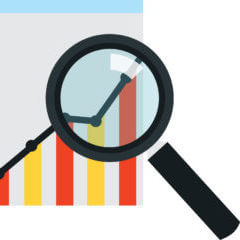If you think of an event as a piece of music — conducted by organizers, played by an orchestra of speakers, exhibitors, and sponsors, working together to create a symphony for attendees — all too often something sounds flat, according to Haluk Kulin, senior vice president of strategy and data for FreemanXP.
That’s because organizers give the orchestra the same musical notes — or none at all. Exhibitors especially may not get the metrics they need to improve their reach or make their presence at events more relevant and interesting.
“As a result, we get cacophony instead of the whole crescendo,” Kulin said. “How can we design metrics that have impact, and divide them like music sheets to the different players, so they have them at the right time to make better decisions?”
Kulin and David Saef, executive vice president of strategy and MarktWorks for GES, are frequent speakers on this topic, often together — including at the inaugural Transform USA event-data conference last July. In recent interviews with Convene, they discussed how sharing data in a usable form with exhibitors can improve events for everyone.
CREATE ACTIONABLE DATA METRICS
There are many ways exhibitors can reach their customers these days: social media, their own marketing channels, conferences and other industry events, and more. There’s increasing competition for exhibitor dollars, and return on investment is required. Organizers who want to keep exhibitors coming back — and add new ones — need to prove that their event is worth it.
“Organizers must dispense with the idea that they are just selling a piece of real estate where exhibitors wait for attendees to come and scan their badges,” Saef said. “It’s no longer a case of ‘If you build it they will come.’ Live events need to stay competitive by demonstrating value. More insights can be gleaned by a wider data set than ever before.”
But what information is best to share with exhibitors, and how? Organizers are already drowning in data, but they aren’t using it effectively, according to Kulin. And while new technologies can measure attendance, flow, registration, social media, and interactions, the real key is drawing actionable information from that data to boost improvement and drive insights.
GES has worked with organizers to reduce exhibitor attrition. Organizers can poll exhibitors about their goals, using high-tech or low-tech tools, for example, and then use that data to create a dashboard to help get them there. That could be information around brand loyalty or brand perception, or increasing membership levels or product sales. “Organizers and exhibitors are mediocre at analyzing and understanding what data tells us,” Saef said. “Both need work on how to introduce changes and updates based on that data to disrupt the system.”
You also should be able to give your exhibitors data related to the benefits of participating in different parts of the show, Saef said. Most popular sessions and topics, social-media discussions, and questions being asked at roundtables are all information they can use.
[pullquote]Organizers must dispense with the idea that they are just selling a piece of real estate where exhibitors wait for attendees to come and scan their badges.[/pullquote]
But it’s not just valuable for exhibitors. The right metrics can help improve the event itself, Kulin said. For example, if you note that 75 percent of exhibitors who worked far in advance on their presentations rather than winging it at the last minute had an increased return at an event, it’s likely exhibitors will then make an effort to be better prepared, leading to improved sessions and presentations. If you find that 50 percent of exhibitors who create and finish event content early saved money on production, that money could be invested in attracting attendees to their sessions and raising the profile of the event. This type of information gives exhibitors a competitive advantage and can be used to nudge them into behaviors that will benefit both them and the event.
A DESIGN PROBLEM
The existing data in the world is doubling every two years, according to Kulin. Existing technologies can already measure how many attendees are at an event, where they go, what they like, and how they’re engaging on social media, while emerging tech can even track how they feel about what’s being discussed in a particular session and predict their behaviors.
Organizers can get caught up in collecting all of this available data without being able to use it effectively. Instead, focus on building a model that targets metrics based on goals. “This is a design problem, not a data problem,” Kulin said. “The challenge is knowing what data to collect, why, and what you’re going to do with it.”
WRESTLING WITH OPENNESS
What about data that exhibitors may not like? Sometimes organizers can be reluctant to share data that makes their show look bad. Kulin recommends openness within reason. If there’s a drop in attendance, for example, data may show that existing attendees are more high-value.
“The more you can build a culture of sharing openly, the better an event will be,” Kulin said. This holds organizers accountable, “and with accountability you build partnerships, and with partnerships you get greater success.”
Read an interview about data and design with Haluk Kulin on FreemanXP’s blog, at convn.org/freemanxp.
Learn more about GES’s exhibition data services at convn.org/ges-data.



